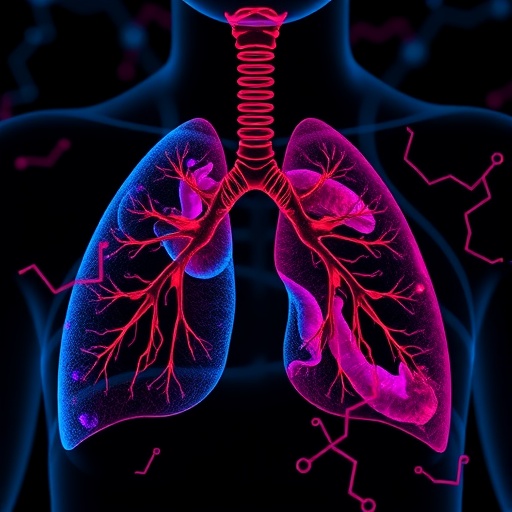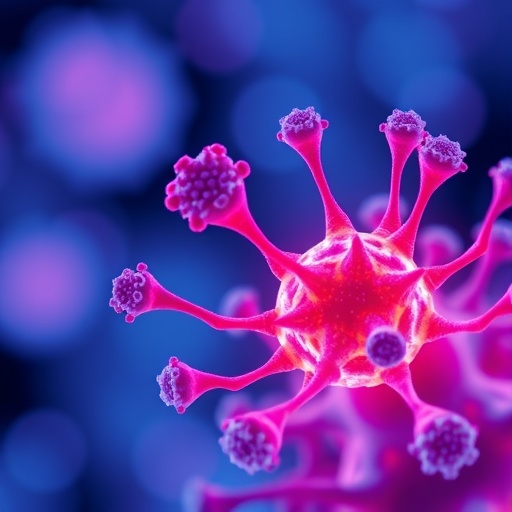Doctors are increasingly fighting cancer by stimulating patients' immune systems. SNSF-supported researchers have now discovered a method for predicting the likelihood of treatment success.
Immunotherapy changes a patient's immune system to allow it to attack cancer cells and either destroy them or at least keep them from growing. But the therapy only works for a minority of patients. Researchers supported by the Swiss National Science Foundation (SNSF) have now discovered how to better predict who will respond to the therapy and who will not.
Unmasking tumours
The key is a protein known as PD-1, which sits on the surface of human immune cells. Until recently, PD-1 was regarded as their Achilles heel because cancer cells attach to the protein, thereby protecting themselves from immune system attack. "It's as though the tumour were wearing camouflage", says project lead Alfred Zippelius, Deputy Head of Medical Oncology at University Hospital Basel. Immunotherapy blocks the attachment site so the immune cells can "see" the cancer again.
An international research group led by Zippelius has now shown that immune cells with the most PD-1 are best able to detect tumours (*). In addition, these PD-1-rich cells secrete a signalling compound that attracts additional immune cells to help fight the cancer. "Therefore these patients have a better chance of responding to immunotherapy", says Daniela Thommen, first author of the study, who is currently at the Netherlands Cancer Institute in Amsterdam on an SNSF mobility fellowship.
Increasing the success rate
At present, still only a fraction of patients respond to immunotherapy. "If we could tell from the outset who the therapy will work for, we could increase the success rate. That would reduce side effects and also lower costs", says Zippelius.
The new findings will enable researchers to develop a practical tool that could ultimately help doctors to decide which patients will benefit from a simple immunotherapy approach and which will require more intensive treatment – for example a combination of chemotherapy and radiation. For that to happen, researchers must first find a way of distinguishing patients based on the amount of PD-1 in their immune cells.
Immunotherapy is becoming increasingly important. "What's revolutionary about it is that some patients may remain cured after years of treatment – even in the case of tumours that have otherwise proved resistant to therapy", says Zippelius. In the meanwhile, University Hospital Basel has set up its own tumour board (a group of doctors with different specialities) for immunotherapy.
###
The project is a collaboration between the Department of Medical Oncology and the Department of Thoracic Surgery at University Hospital Basel, the Netherlands Cancer Institute in Amsterdam as well as the Department of Pathology at the Cantonal Hospital Baselland in Liestal and the Roche Innovation Center Basel.
(*) D. S. Thommen et al.: A transcriptionally and functionally distinct PD-1+ CD8+ T cell pool with predictive potential in non-small cell lung cancer treated with PD-1 blockade. Nature Medicine (2018).
DOI: 10.1038/s41591-018-0057-z
(Available to journalists in PDF format from the SNSF: [email protected])
Career funding at the SNSF
TheSwiss National Science Foundation (SNSF) provides targeted funds for young researchers in Switzerland. The objective is to promote earlier scientific independence for the researchers and to strengthen Switzerland's position as a leading research location.
From 2007 to 2010 Daniela Thommen was the recipient of an MD-PhD fellowship for a second doctorate in natural sciences, and since 2016 of an Advanced Postdoc.Mobility grant (replaced by Postdoc.Mobility) for a research stay at the Netherlands Cancer Institute.
Alfred Zippelius was supported by an SNSF Professorship (replaced by Eccellenza) from 2010 to 2013 and since then has held a clinical professorship at the University of Basel.
Media Contact
Prof. Alfred Zippelius
[email protected]
41-613-286-016
http://www.snf.ch
http://www.snf.ch/fr/pointrecherche/newsroom/Pages/news-180611-communique-de-presse-cancer-mieux-cibler-lutilisation-de-immunotherapie.aspx
Related Journal Article
http://dx.doi.org/10.1038/s41591-018-0057-z




